My name is Thomas Greene, and I am an astrophysicist at NASA's Ames Research Centre in California’s Silicon Valley.
I am a co-investigator on the James Webb Space Telescope's (Webb) Near-Infrared Camera (NIRCam) and Mid-Infrared (MIRI) science instruments. My work includes leading the development of the spectroscopic modes of NIRCam, which involves dispersing light into constituent wavelengths.
I also have science programs to use those instruments to study exoplanets, which are planets around other stars, after Webb is commissioned this summer.
What inspired your career in astrophysics, and how did you begin your involvement with the Webb Telescope?
I have been interested in astronomy and space since I was about five years old, and I pursued a Ph.D. degree in astronomy after receiving an undergraduate university instruction at the University of California at Santa Cruz.
I first started working on Webb instrument designs over 24 years ago when I was working at the Lockheed Martin Advanced Technology Centre in California. It was here that the NIRCam instrument was eventually built.
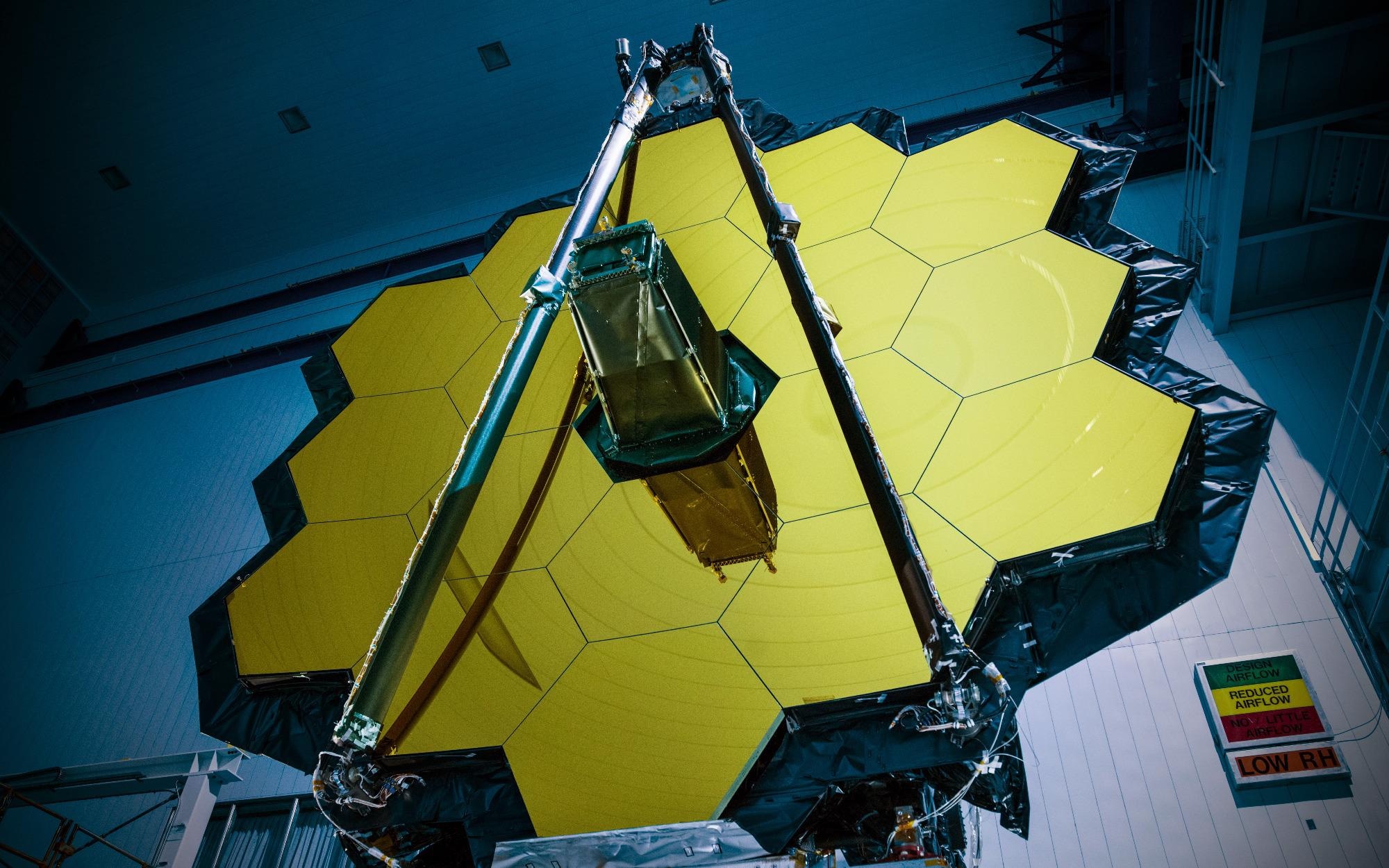
© NASA Goddard
What are the primary mission objectives of the Webb Space Telescope?
When we started specifying Webb science 20 years ago, we knew that its greatest discoveries would be in areas that we could not yet imagine."
Therefore, we decided that the telescope should be capable of making impactful observations in the major areas that encompass most of astrophysics:
- Detect the first galaxies that formed in the Universe after the Big Bang
- Learn how these early galaxies evolved into larger, more structured ones like we have today, like our own Milky Way
- Study the birth and death of stars and their planetary systems
- Study planetary systems near and far and the origins of life
Could you break down the two key infrared technologies that feature within the Webb?
The Webb instruments use several cutting-edge technologies. In particular, the three near-infrared instruments (NIRCam, NIRSpec, NIRISS) all use detectors that have Mercury-Cadmium-Tellurium (HgCdTe) infrared-sensitive photodiode detectors that are 2040 x 2040 pixels in size.
The mid-infrared instrument uses 1020 x 1020 pixel arsenic-doped silicon impurity band conduction (Si:As IBC) photo-conductive detectors to enable it to see longer wavelengths, between 5 – 28 microns.
The HgCdTe detectors must be operated at about 37 K (-236 ºC), and the Si:As IBC detectors are operated at 7 K (-266 ºC) temperatures to prevent their own heat from overwhelming faint signals from the telescope.
The NIRCam and MIRI are focused on two separate sections of the infrared spectrum.
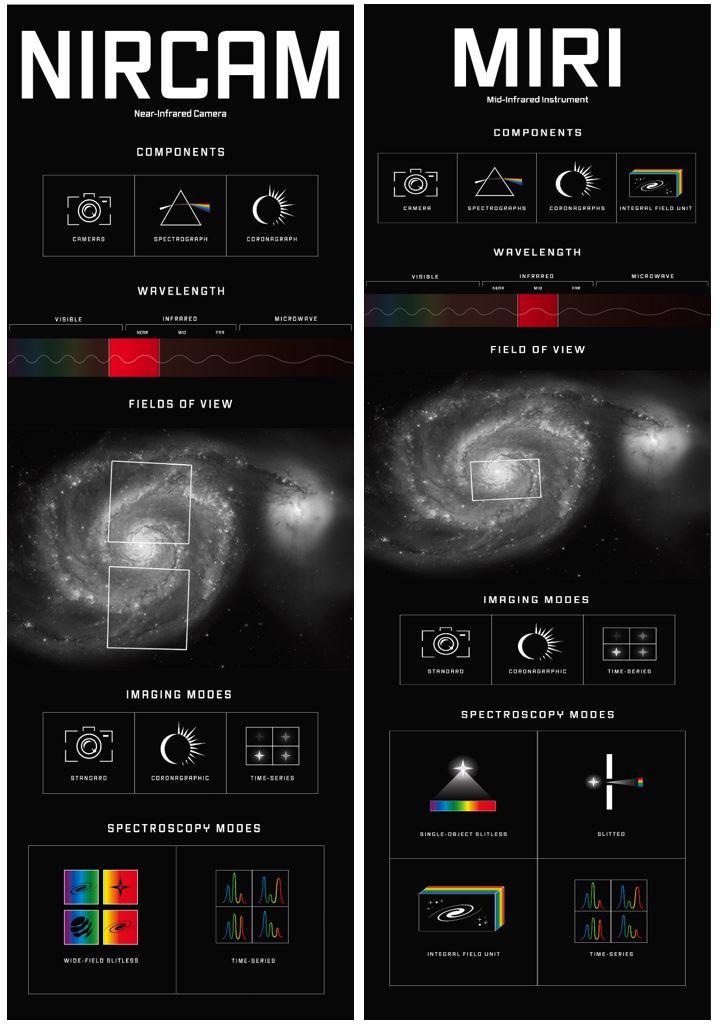
The Near-Infrared Camera (NIRCam) is Webb’s primary near-infrared imager, providing high-resolution imaging and spectroscopy for a wide variety of investigations. The Mid-Infrared Instrument (MIRI) provides imaging and spectroscopy capabilities in the mid-infrared. © NASA, ESA, Andi James (STScI)
Could these systems be integrated into one technology in the future? What benefits would doing this have for scientific discoveries?
Good question! NIRCam and MIRI operate over a very broad wavelength range, 0.6 – 28 microns, spanning nearly a factor of 50. It is possible to make a single detector that operates over this wide range, but current ones have low sensitivity and must be operated at very cold temperatures, even colder than the MIRI ones.
Another limit is that the telescope's spatial resolution will also vary by nearly a factor of 50 over these wavelengths, so a single instrument would need complicated or multiple optical systems to provide a wide range of magnifications to make optimal use of the telescope's resolution over this range.
At this time, it is simpler to make separate instruments optimized for each wavelength range.
Could you explain how NIRCam's coronagraphs work, and how they could broaden our understanding of how different planetary systems function?
The NIRCam coronagraphs can be used to attenuate the signal of a star by a factor of 100,000 or more without impacting the signal of nearby planets. When combined with NIRCam's special filters, this will allow us to discover planets like Jupiter and Saturn or even smaller ones around nearby stars
Searching for and discovering more planetary systems with giant outer planets will give us context for how our own solar system formed and evolved.
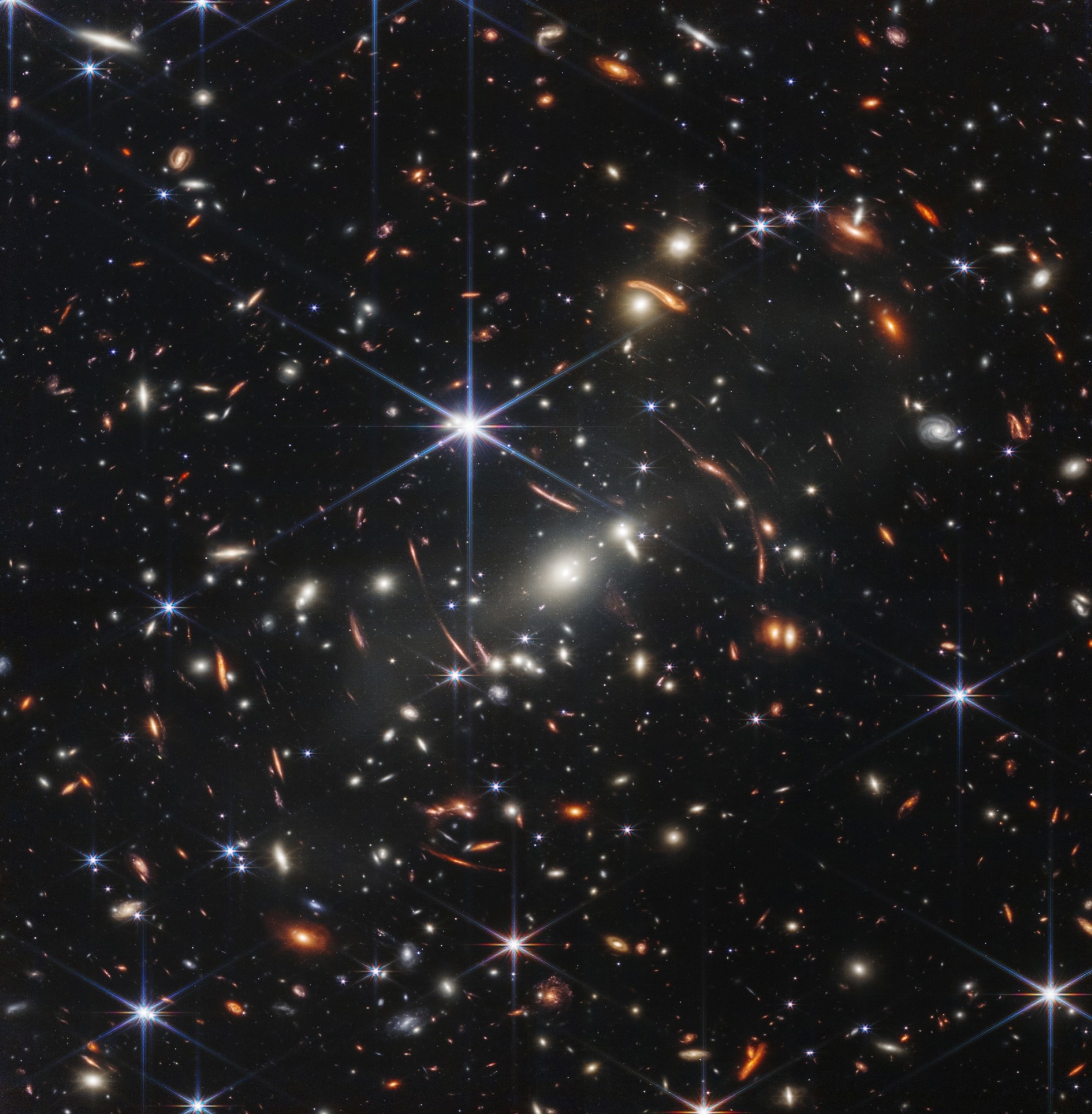
Webb’s First Deep Field. The galaxy cluster SMACS 0723, and the first full-color image released from the Webb © NASA, ESA, CSA, and STScI
Another key aspect of the NIRCam is that it can reveal distant objects early in formation, such as new stars and galaxies. How might these investigations help us understand the origins of our own system?
We will use NIRCam to study clusters of young stars that are still forming. We hope to learn what determines the eventual mass of a star and measure how many stars form in each mass interval. We will also study some very young protostars that are still assembling themselves.
Those observations will show us what organic molecules are present when planetary systems form and how radiation from their young stars impacts these proto-planetary environments. Insight can be gained as our own Sun, Earth, and Solar System must have gone through similar processes.
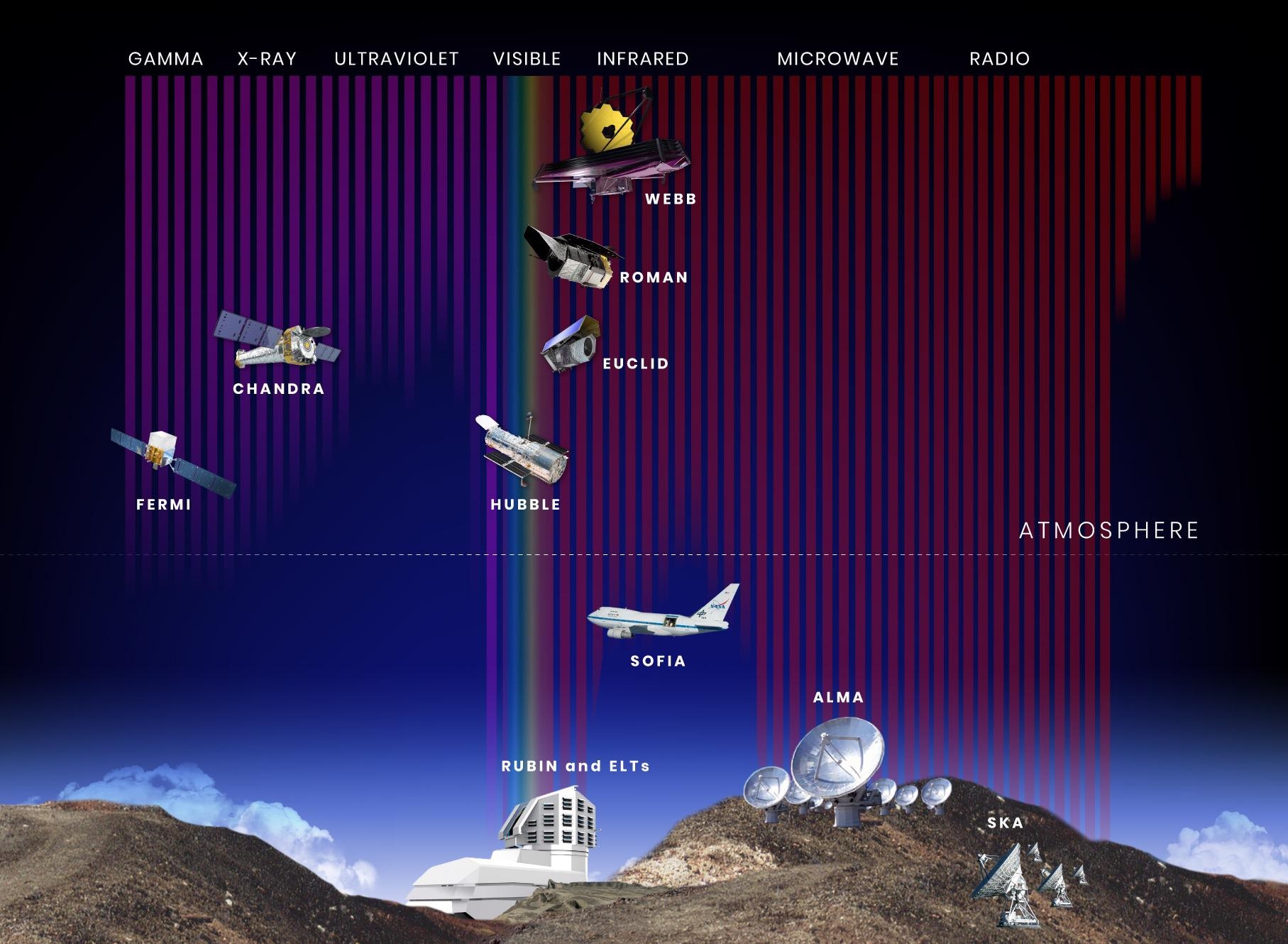
© NASA, ESA, Andi James (STScI)
Compared to the Hubble Space Telescope, the Webb contains technologies much more sensitive to infrared light. How else do these two telescopes differ?
Hubble was very sensitive in visible light, and now we need to make sensitive infrared observations with Webb to understand better the complete nature of many astronomical objects.
Hubble is a warm telescope; it was built, tested, and is operated at about room temperature. To make sensitive infrared observations, the James Webb Space Telescope had to be built at room temperature but operated very cold (-230 ºC and below). This required advanced infrared detectors, materials, techniques, such as polishing Beryllium mirrors, sophisticated computer modeling, and advanced cryogenic testing facilities that did not exist when Hubble was designed and built in the 1970s and 1980s.
How might Webb's infrared systems help astronomers view objects that are particularly difficult to observe?
The first galaxies that formed in the Universe after the big bang will be exceedingly faint because they are over 13 billion light years away. Their blue and visible light has also been shifted to mid-infrared wavelengths because the early Universe is expanding from us very rapidly, causing their wavelengths to be Doppler shifted to the red by a factor of 10 or more.
Webb's exquisite sensitivity in mid-infrared wavelengths will be key for observing these rare first galaxies.
The Webb surpasses the Hubble's light sensitivity limit, reaching towards the end of the mid-infrared spectrum to explore the earliest phases of cosmic history.
Galaxy Evolution: James Webb Space Telescope Science
© NASA, James Webb Space Telescope (JWST)/YouTube.com
However, far-infrared is yet to be explored like this. Does this area of the spectrum hold as much promise as the others? If so, what improvements to current technologies might need to take place to investigate it?
There is much scientific promise in the far-infrared, and improving detector and cryogenic technologies will be needed to make a future large and sensitive space telescope.
The Spitzer Space Telescope was launched in 2003, and its cold temperature (10K or -263 ºC) enabled it to make sensitive observations at far-infrared wavelengths. However, Spitzer collected 50 times less light than Webb, so its ultimate sensitivity suffered.
We need a telescope the size of Webb that is at about 5K or -268 ºC with sensitive far-infrared detectors to make these exciting observations in the future, receiving high priority in the recent US Astronomy and Astrophysics Decadal Survey report.
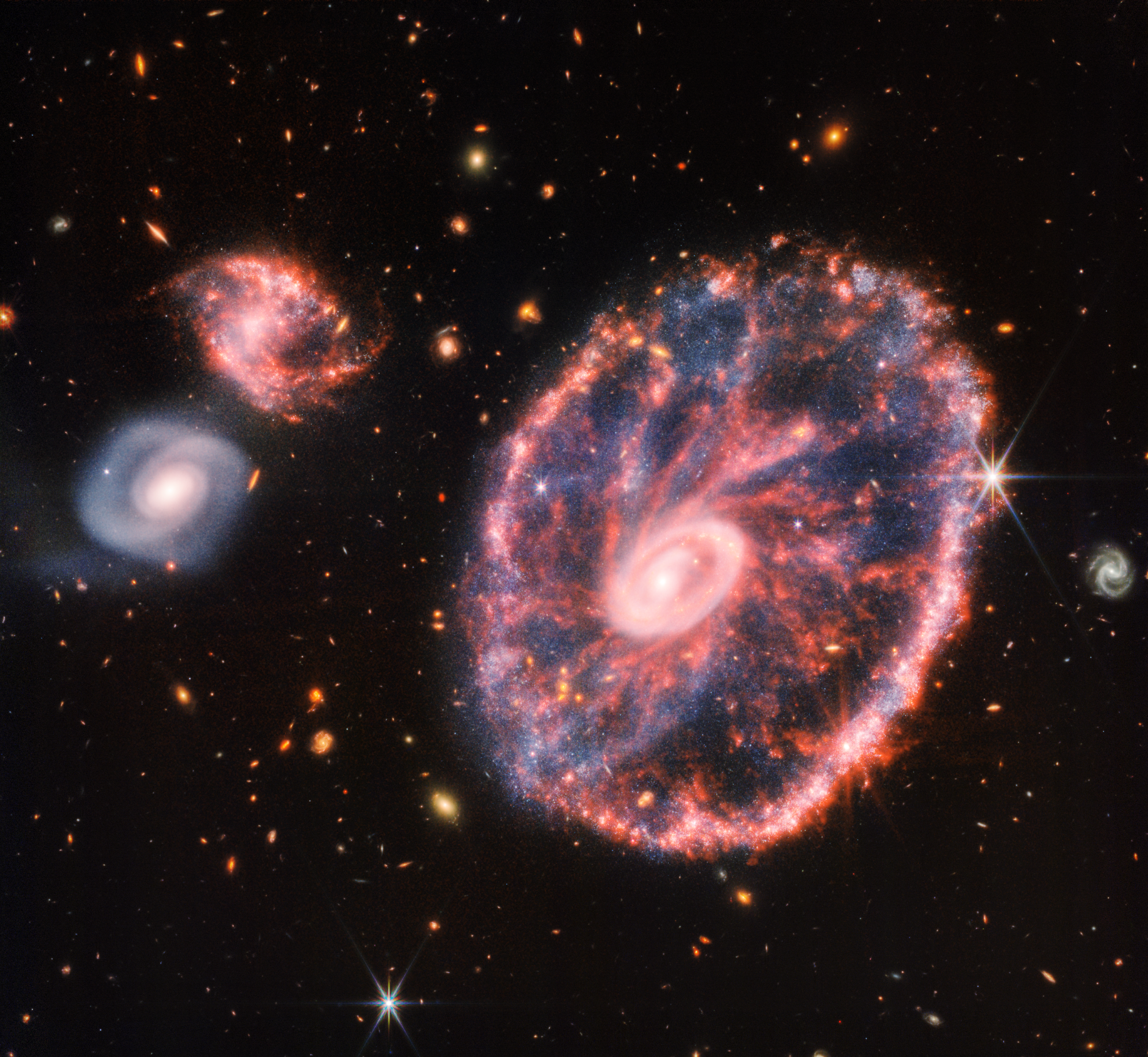
A large pink, speckled galaxy resembling a wheel with a small, inner oval, with dusty blue in between on the right, with two smaller spiral galaxies about the same size to the left against a black background. Image Credit: NASA, ESA, CSA, STScI
What aspect of this mission do you find the most exciting?
I am excited about checking out the performance of the instruments that I helped develop, and I especially look forward to using them to make new discoveries about exoplanets and young stars.
The James Webb Space Telescope is Fully Unfolded in Space!
© NASA, James Webb Space Telescope (JWST)/YouTube.com
Where can our readers go to stay up to date with the James Webb Space Telescope mission?
The best current sources of information are:
About Dr. Thomas Greene
 Dr. Thomas Greene is an astrophysicist in the Space Science and Astrobiology Division at NASA's Ames Research Center. He conducts observational studies of exoplanets and young stars and develops astronomical technologies and instrumentation.
Dr. Thomas Greene is an astrophysicist in the Space Science and Astrobiology Division at NASA's Ames Research Center. He conducts observational studies of exoplanets and young stars and develops astronomical technologies and instrumentation.
Dr. Greene is the principal investigator of two James Webb Space Telescope guaranteed observing time programs to study exoplanets and protostars, and co-investigator on two of the telescope's instruments: NIRCam, or Near-Infrared Camera, and MIRI, or Mid-Infrared Instrument. Dr. Greene has a Bachelor of Arts in physics from the University of California at Santa Cruz and a Ph.D. in astronomy from the University of Arizona.
Disclaimer: The views expressed here are those of the interviewee and do not necessarily represent the views of AZoM.com Limited (T/A) AZoNetwork, the owner and operator of this website. This disclaimer forms part of the Terms and Conditions of use of this website.